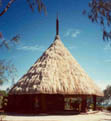
Ceramics
Ceramics at the festival was also dominated by the Maori contingent. Workshops were held daily and a Maori style kiln was built and fired. The master potters (nga kaihanga uku) were Manos Nathan, Colleen Waata-Ulrich. "The Maori ceramic tradition is little known, however it is said that is has ancestral connections to the Lapita pottery traditions found in the western Pacific, particularly in New Caledonia."
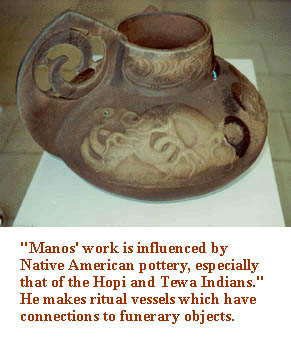
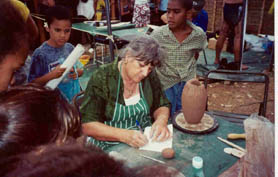 |
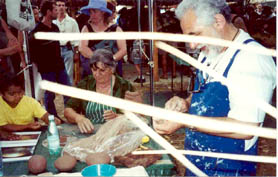 |
|||||||||||
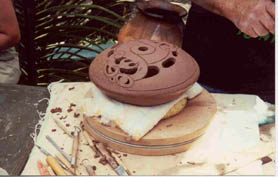
'The building and firing of the Maori kiln was a highlight of the Festival for me. Pots were stacked on the ground and surrounded with kindling. A simple frame was made from branches in the shape of a tipi (reminiscent of a termite mound to the Maori) around the stack of pots. Then the structure was covered with slip soaked newspaper. An opening was left on top, as was a small hole at the bottom to serve as the door to the fire box. Then more thick slip was rubbed all of the sides. Upon completely covering the kiln to about 1/2 inch thick with slip, kindling was placed in the fire box and was lit. The kiln continued to be stoked throughout the afternoon and evening.
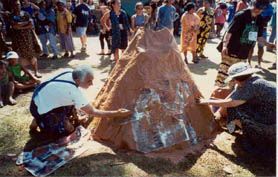 |
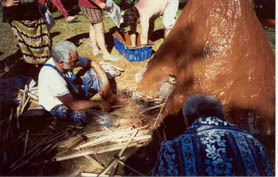 |
|||||||||||
The process of making the kiln took the better part of a morning. It was lit in the early afternoon and allowed to fire the rest of the day and throughout the night. Early the next morning it was to be broken open, its treasures revealed.
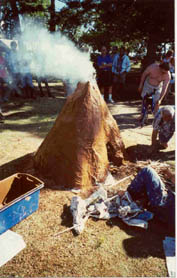
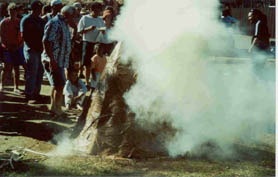
A late night of dancing and a cloudy, rainy morning precluded my attendance at the kiln opening. When I arrived it had been cracked opened and the pots had been given to those that had made them and other special friends. Manos told me about his satisfaction with the firing. All that was left were the remnants below and the dark scar on the earth where the kiln had been.
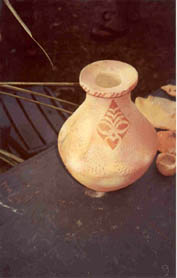 |
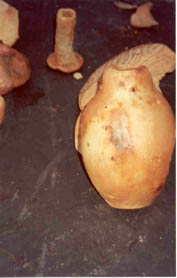 |
|||||||||
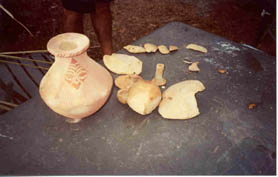
A third Maori potter that I did not have the opportunity to meet was Kelly King. Her works, seen below, were displayed at one of the venues called the SPC. Ms. King is a recent graduate of the Waiariki Institute of Technology. She incorporates several media in her work.
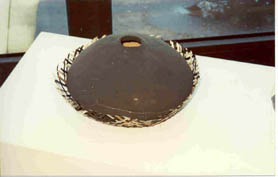
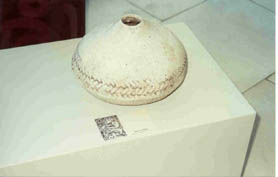 | 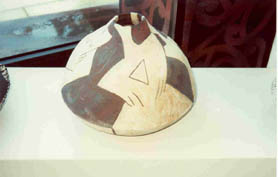 |